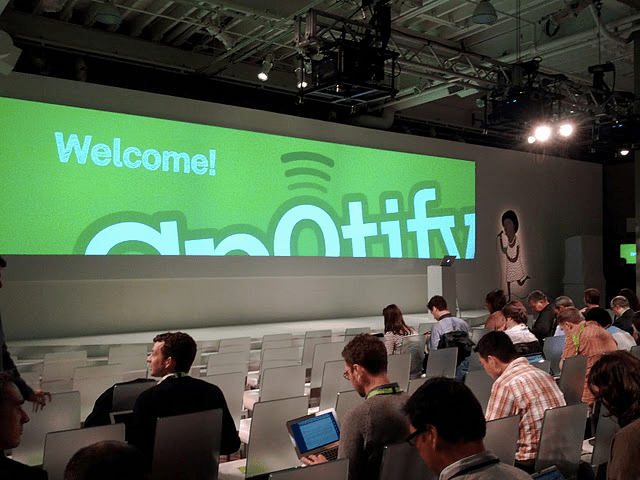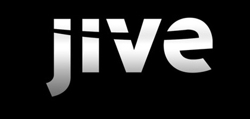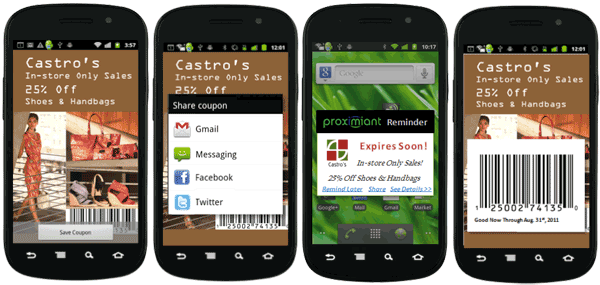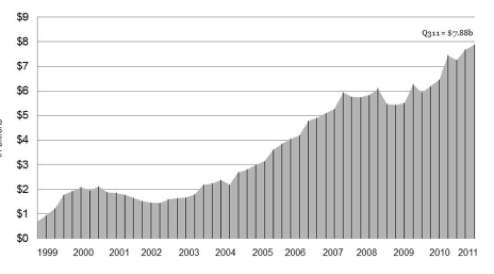Index Ventures is commonly regarded as once of the three “Big Cat” VCs stalking tech companies, in a pan-European sense out of London, alongside Accel Partners and Balderton Capital among others. I sat down with three of its key players today – Saul Klein, Robin Klein and Bernard Dallé – to tease out where they are right now and where they plan to head.
This month it
announced a €500 million growth fund (roughly $700 million), its second such fund meant for later-stage investments. It pipe-line to deals is now impressive. At the early stage it has its investment (alongside 30+ other investors) in Seedcamp, it has Index Seed (headed by Robin Klein), then it’s main fund and now a substantial growth fund. Although The Accelerator Group (created originally by father and son duo Robin Klein and Saul Klein) still has a live portfolio, in practice “all new deals are done with Index Seed”, Robin Klein says.
The new growth fund will invest anything from €10 million to €50 million in ventures with proven business and revenue models located around the globe, but primarily companies based in Europe or U.S.. In fact, Index Ventures actually led Dropbox’s recent, high-profile $250 million round of financing.
Arguably speaking, Index has hit it out of the park in terms of its investment strategy in the last few years. It moved faster than most VCs into the early stage startup investing sector and was a prime mover behind European startup accelerator Seedcamp. It’s also had big wins in the form of Betfair (floated on the LSE), Last.fm (exited to CBS), Lovefilm (Amazon), Playfish (EA), Net-a-Porter (Richemont) and Skype (eBay), Lovefilm (Amazon). And it’s backing the ‘newer’ companies like Groupspaces, Lanyrd, Lightbox, and recently LevelBusiness. Outside of the UK it is an investor in SoundCloud (in Germany) Adyen (The Netherlands, Ozon (Russia), Privalia (Spain) and Erply (Estonia) among others.
So why sit down with TechCrunch now, I asked? Were they worried other VCs were getting press and they weren’t, I joked?
“We’re not worried about not getting press!” says Saul Klein. “We’d be more worried if VCs weren’t getting any at all.” Klein admits there is a perception of VC doing the rounds in Europe that they are not up to par. This follows recent controversy around posts such as
“European VC Needs Revolution, Not Evolution” by Fred Destin of Atlas ventures, and European VCs being branded
“Timid, risk averse, bad” by the likes of Nick Halstead of Datasift.
Saul Klein says if there is a failing it’s that European VCs are either not spending enough time “telling their story” and setting out their shop for entrepreneurs, or – on the other hand – that the media are paying too much attention to the high profile bloggers and Twitterers (he admits, like himself on
@cape) rather than the VC partners who don’t blog or tweet. Saul Klein is not stranger to PR, having
recently met out own Editor in New York.
Personally, I see his point, but what European entrepreneurs tell me all the time is that they prefer the noisy VCs to the quiet ones – at least they “sound” enthusiastic about startups. It’s in part why the likes of Dave McClure of 500 startups seem to ge so much attention when they are visiting Europe – at least they throw you some feedback. Time and again I hear from European entrepreneurs that they don’t get enough feedback, and not enough direct, fast “yeses” or “noes” to their pitches about funding.
Whatever the case, Index has set a good pace. It’s invested over £185m in over 40 startups in the last ten years, creating – they say – over 5,000 new jobs and close to £1.5bn in new annual revenues. And that’s potential tax revenue the UK government would be pretty glad of right now.
Doubling down on London as a base from which to invest appears to have paid off. While Index – alongside most VCs – seems to have a partner on a plane almost constantly, it’s London which has acted as the bedrock of its strategy.
In terms of seed investment, Index has put in £26m in 15 London companies over the last decade. These include Moo, Moshi Monsters, PeoplePerHour, Seedcamp, Songkick and Stylelistpick – many of those have other co-investors of course. It’s also participated in Funding Circle, Glasses Direct, Housetrip and One Fine Stay, to name a few others.
But out of the total 200 or so deals it’s done since 2002, says Saul Klien, around 40 have been in London, many of them ‘multi-stage (so from seed and follow-on funding).
Index started in Geneva with Danny Rimer, but it’s celebrating it’s 10th anniversary in London next year and it would seem the international profile of its partners – variously American, Czech, French, Italian, South African, Swiss, Swedish and British – suits their London base, which is now an international city (about a third of people in London are not from London, according to the latest figures).
London’s heady mix of creative, commercial, financial, media industries seems to be helping both startups and investors attract the talent for the next global companies like Badoo, Moneybookers, Spotify and Wonga.
Indeed, the emergence of the ‘Silicon Roundabout’ cluster of tech companies is in part down to Index Ventures, which initially backed
Moo.com. It was Moo founder Richard Moross who convinced an – at first – bemused Index to allow him to get a much larger office than he needed, thus renting out desks to future companies including Dopplr (exited to Nokia) and Tweetdeck (acquired by Twitter), and Groupspaces. Today Index now has a satellite office in Moo’s building in Scrutton St, Shoreditch.
Another Index portfolio company, Songkick, has since created the SiliconMilkRoundabout hiring festival, attracting over 1,500 developers in one day), something which has been a big boon to the area’s tech companies.
That said, the tech scene in Europe does seem to be becoming “bi-polar” as Dallé puts it to me.
“There seems to be an axis developing between London and Berlin across Europe.” And he points to the close relationships between Swedish entrepreneurs setting up in Berlin (Soundcloud and ReadMill both have Swedish founders) and London (TripBirds is in Stockholm but backed by London-based Passion Capital).
Does that mean Index is poised to open a Berlin office, I ask?
“I don’t see us creating an office in Berlin when we have a partner there probably twice a month anyway,” says Dallé. “But it’s not inconceivable.”
Saul Klein points out that it’s in the “DNA” of Index, founded as ti was in sleepy Geneva, to get out of the office anyway so having another office in Europe is not as important as it’s recent footprint office in Silicon Valley, enabling more bridging to take place with the Valley.
Turning to the growth fund Index has announced, Dallé said that “Series B and growth funding is not necessarily ‘the next investing phase’.” “But,” he added, “it is a rich opportunity.”
Saul Klien pointed out that there are those that say “2012 is going to be like 2008″ – referring to the famous statements by some US VCs at the time that the money was going to dry up. However, “there are natural life cycles to startup investing and the economics mean that every pound put into 6 out of 10 startups will return less than the pound put in. It’s the putters that make the returns.”
So what does Index invest in? “We tend to look at themes, not sectors. So marketplaces, cloud, music, fashion, financial services etc,” says Saul Klein.
Part of how Index operates is via making the management teams at its startups share knowledge, particularly amongst CTOs in terms of best practice. It’s not unheard of at other VCs, but Index seems to think it has a unique approach with this culture.
As backers of many startups in the East London area, what do they think about the UK government’s “Tech City” initiative? “We love it! It’s great. In fact we’ve ben trying to do the same thing for ten years [creating a tech cluster] and now it’s been down for us!” Robin Klein tells me.
That’s probably the most enthusiastic response I’ve yet heard from a VC about the area, and interestingly from one deeply involved in many of the startups in East London.
And with 10 years of startup investing under its belt, particularly out of London, it seems like the Index juggernaut is not about to lose pace any time soon.





























